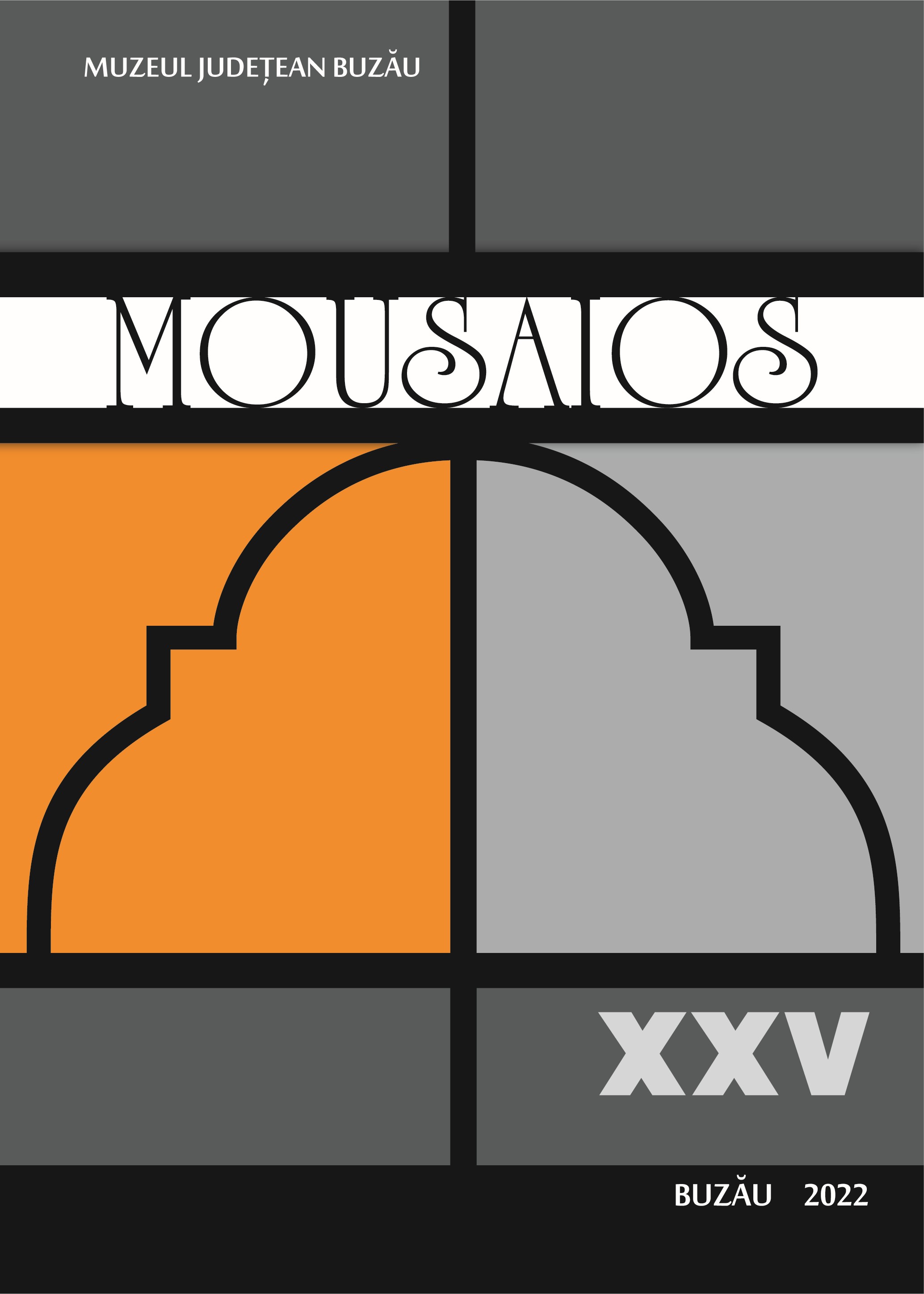UN TEZAUR DE DRAHME DIN DYRRHACHIUM DESCOPERIT LA PRUNENI, JUD. BUZĂU
A DYRRHACHIUM DRACHMAS HOARD DISCOVERED AT PRUNENI, BUZĂU COUNTY
Author(s): Sebastian Matei, Theodor IsvoranuSubject(s): Archaeology, Ancient World
Published by: Muzeul Judetean Buzău
Keywords: Dyrrhachium; drachmas; coin hoard; magistrates; pre-Roman Dacia; Ist Century BC;
Summary/Abstract: The authors present a small hoard comprised of nine drachmas from the ancient city of Dyrrhachium, discovered in the place called "Muchia Blăjani", at 2 km west of the Pruneni village (Buzău County), in the vicinity of a plateau located on the top of a dominant hill, on which traces of a La Tène settlement have recently been identified. During a surface research conducted in 2021, several ceramic fragments were discovered on the surface of the ground, coming from hand-made jars and amphorae.The coins from the Pruneni hoard belong to the 5th group of drachmas issues of the city’s mint, the last one, dating between 97-85 BC according to the chronology of N. Conovici, in which the best represented are the issues of the monetar magistrates Xenon and Meniskos. They worked for five and six eponymous magistrates respectively, totalizing a period of ten years (97-88 BC). The structure of the Pruneni hoard attests to the association between the moneyer Xenon and the eponym Philodamos (2 ex.), and of Meniskos with the eponyms Kallonos, Lykiskos (5 ex.) and Dionysios, representing the years 93, 91, 89 and 88 BC. The pauses in the chronological sequence of the drachmas issues suggest that this is a small amount from a larger batch, most likely representing a so-called „purse hoard”. The appearance of the coins is illustrative for the production in large quantities in a short time, at the political command, as in times of crisis: most of the coins were struck off-center, on flans (rarely circular) smaller than the dies, a negligent achievement that denotes the concern exclusively for the rapid monetization of as much silver as possible, to the detriment of technical and iconographic standards. At least seven exemplars bear traces of burning. Although the drachmas of the 4th-5th groups of Dyrrhachium issues penetrated in large numbers in pre-Roman Dacia, presumably in a short period between the 3rd and 4th decades of the 1st century BC, as political payments or from other sources in connection with the Roman wars in the Balkans, they remained very poorly attested in some areas. For the area of Buzău county, the treasure from Pruneni represents the first discovery in a hoarded form of the drachmas of this city.
Journal: Mousaios
- Issue Year: 2022
- Issue No: 25
- Page Range: 123-131
- Page Count: 9
- Language: Romanian

